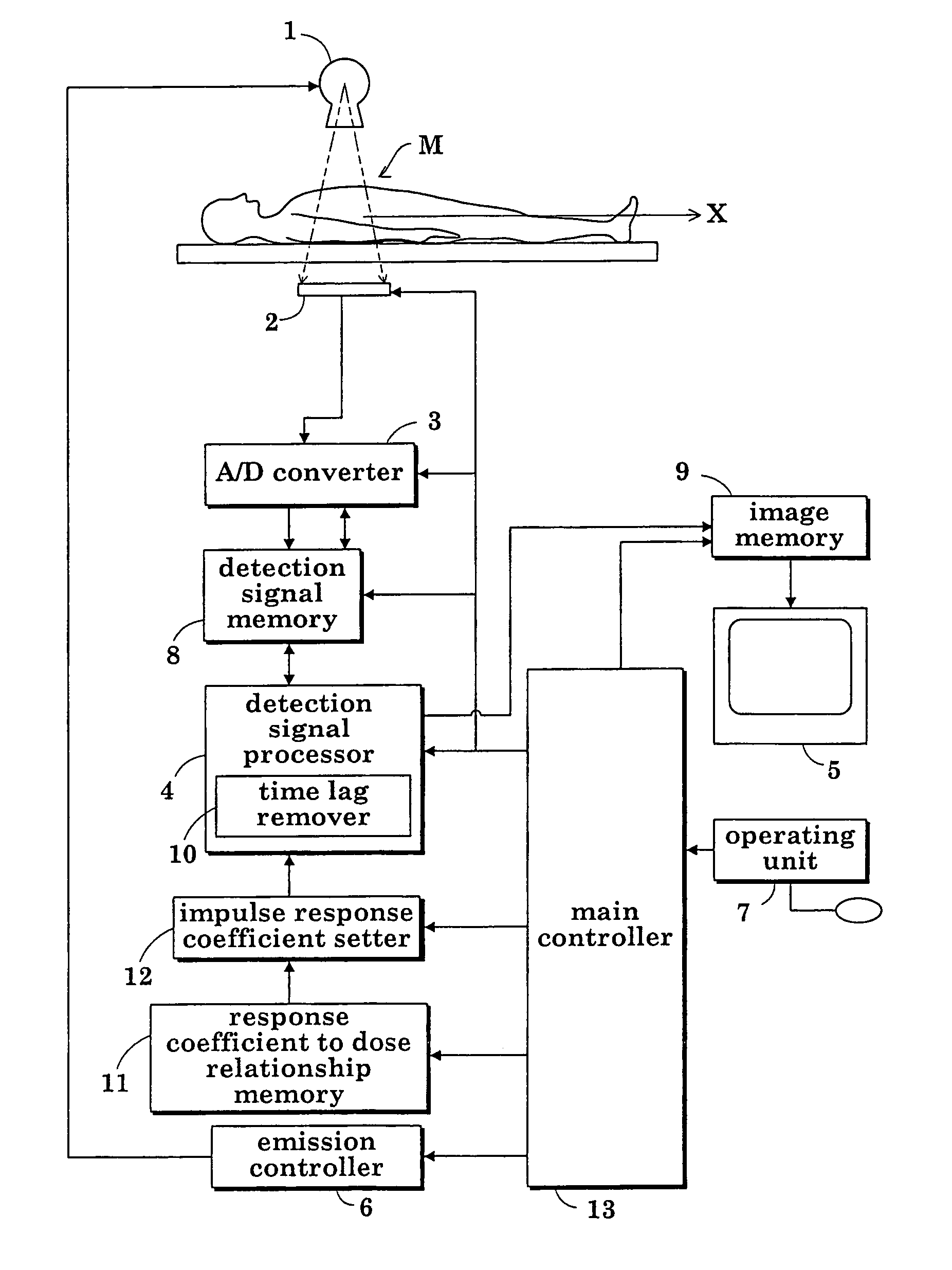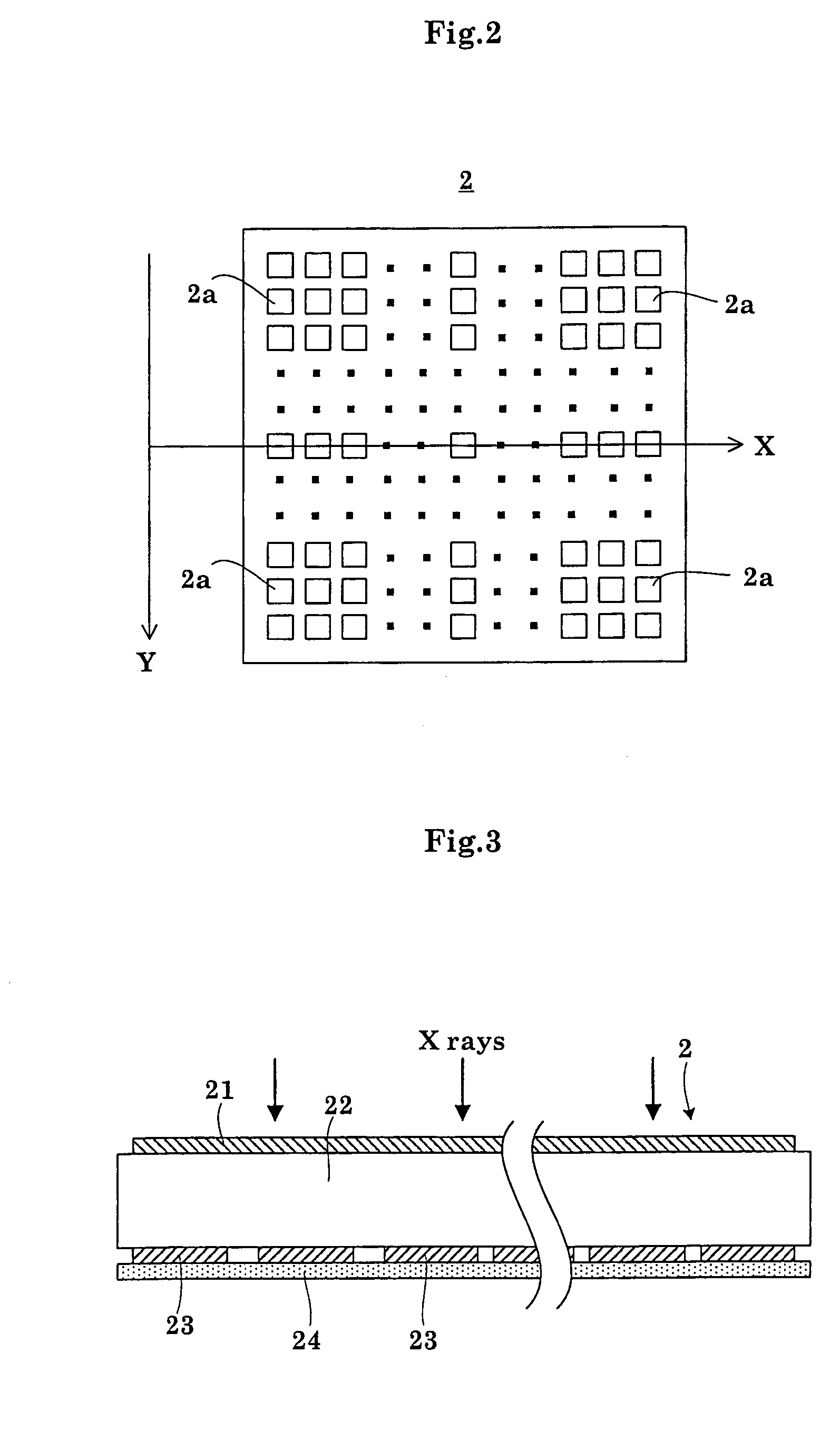Radiographic apparatus and radiation detection signal processing method
a radiation detection and signal processing technology, applied in the field of radiographic equipment, can solve the problems of time lags whose adverse influence appears in x-ray images, blurred dynamic images, and inability to avoid artifacts, and achieve the effect of accurate elimination of time lags
- Summary
- Abstract
- Description
- Claims
- Application Information
AI Technical Summary
Benefits of technology
Problems solved by technology
Method used
Image
Examples
first embodiment
[0110]FIG. 1 is a block diagram showing an overall construction of a fluoroscopic apparatus in a first embodiment of this invention.
[0111]As shown in FIG. 1, the fluoroscopic apparatus includes an X-ray tube (radiation emitting device) 1 for emitting X rays toward a patient M, an FPD (radiation detecting device) 2 for detecting X rays transmitted through the patient M, an analog-to-digital converter 3 (signal sampling device) for digitizing X-ray detection signals (radiation detection signals) taken from the FPD (flat panel X-ray detector) 2 at predetermined sampling time intervals Δt, a detection signal processor 4 for creating X-ray images based on X-ray detection signals outputted from the analog-to-digital converter 3, and an image monitor 5 for displaying the X-ray images created by the detection signal processor 4. That is, the apparatus is constructed to acquire X-ray images from the X-ray detection signals taken from the FPD 2 by the analog-to-digital converter 3 as the pati...
PUM
| Property | Measurement | Unit |
|---|---|---|
| attenuation time constants | aaaaa | aaaaa |
| time constants | aaaaa | aaaaa |
| processing | aaaaa | aaaaa |
Abstract
Description
Claims
Application Information
 Login to View More
Login to View More - R&D
- Intellectual Property
- Life Sciences
- Materials
- Tech Scout
- Unparalleled Data Quality
- Higher Quality Content
- 60% Fewer Hallucinations
Browse by: Latest US Patents, China's latest patents, Technical Efficacy Thesaurus, Application Domain, Technology Topic, Popular Technical Reports.
© 2025 PatSnap. All rights reserved.Legal|Privacy policy|Modern Slavery Act Transparency Statement|Sitemap|About US| Contact US: help@patsnap.com



